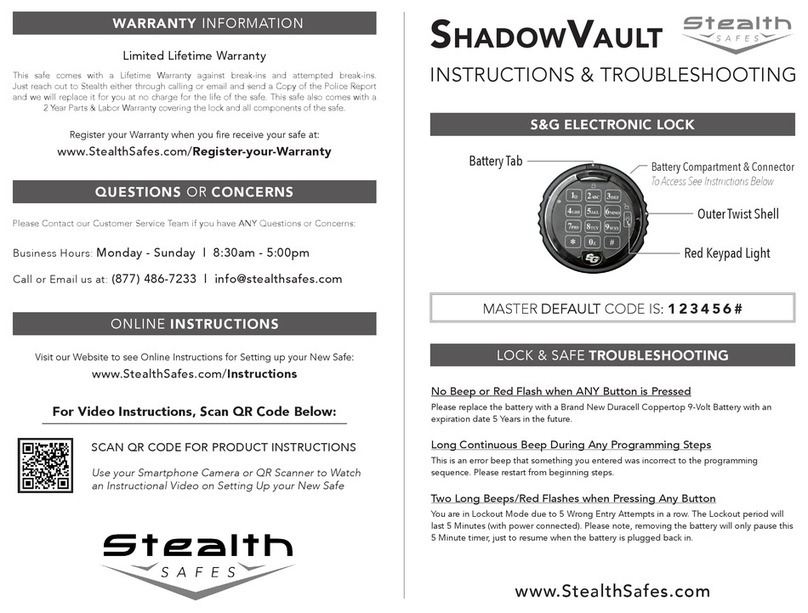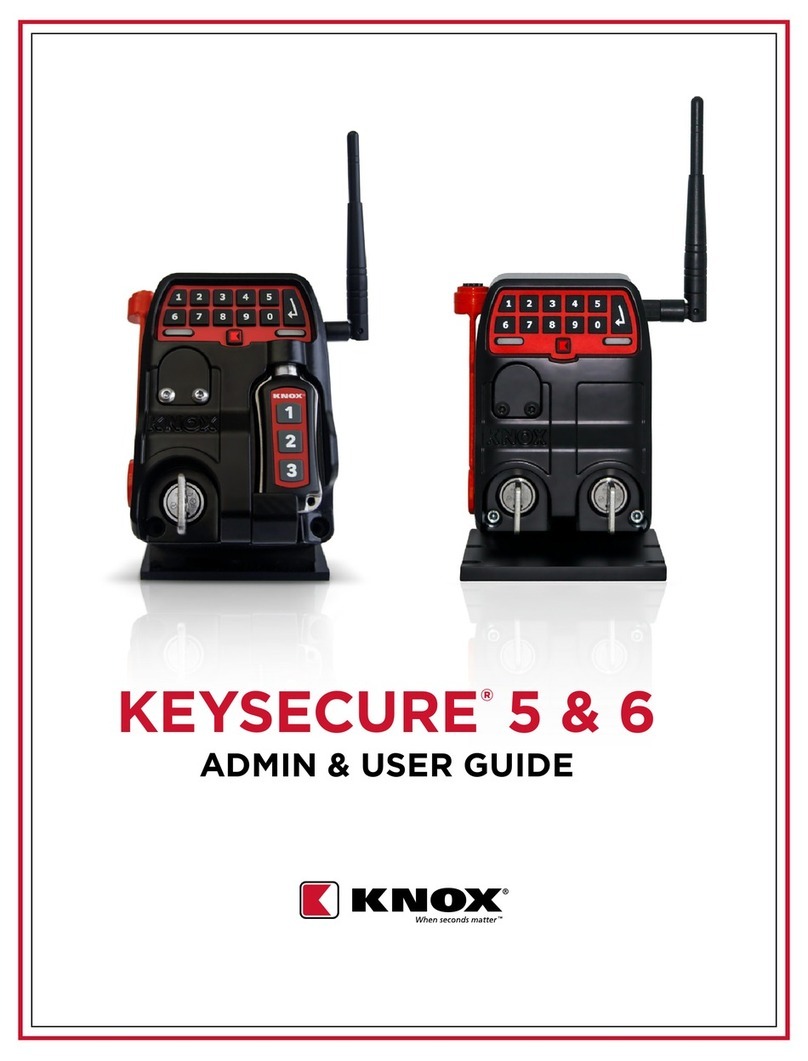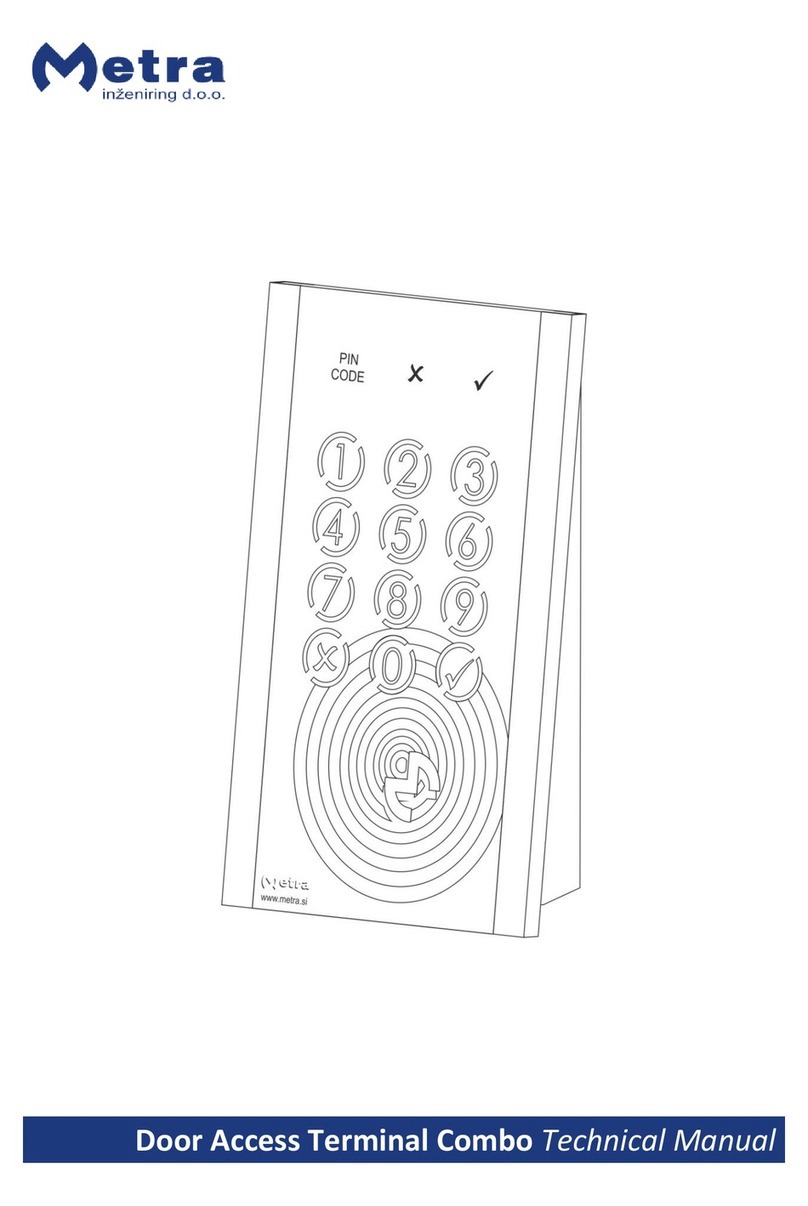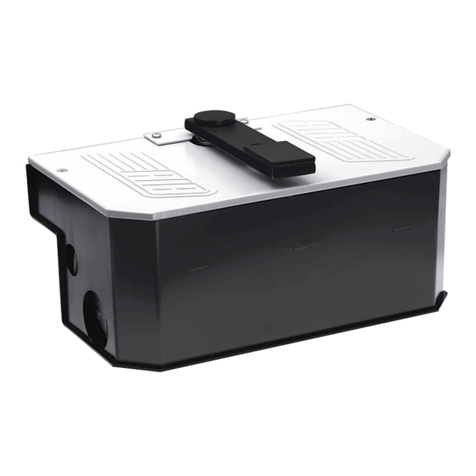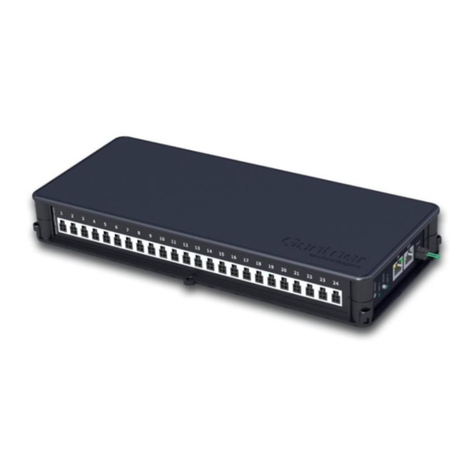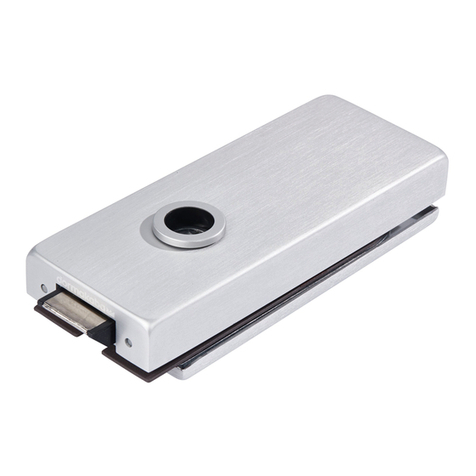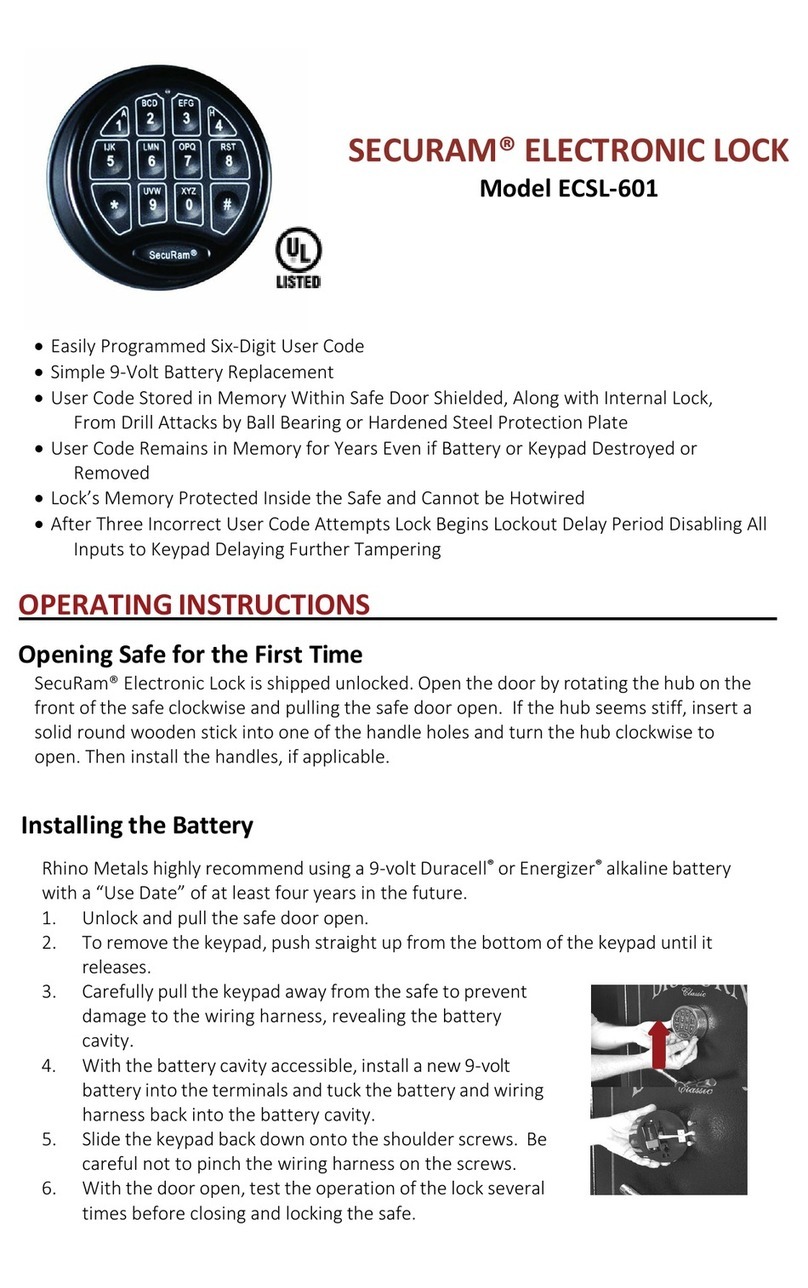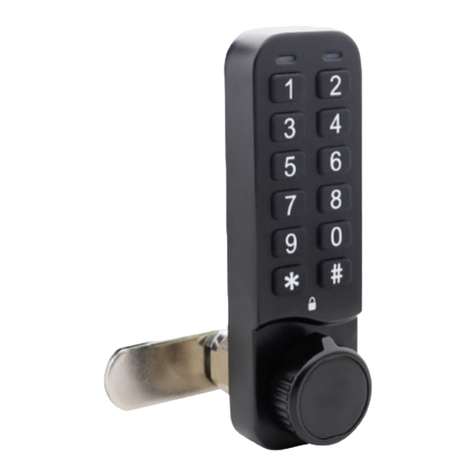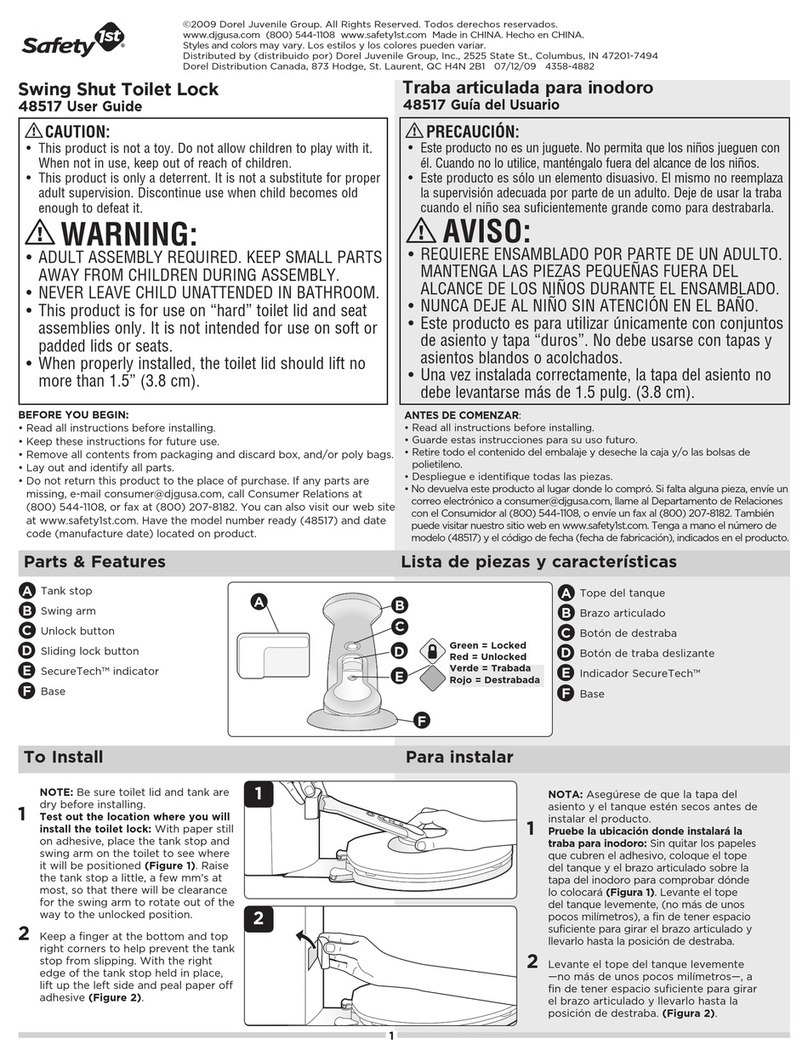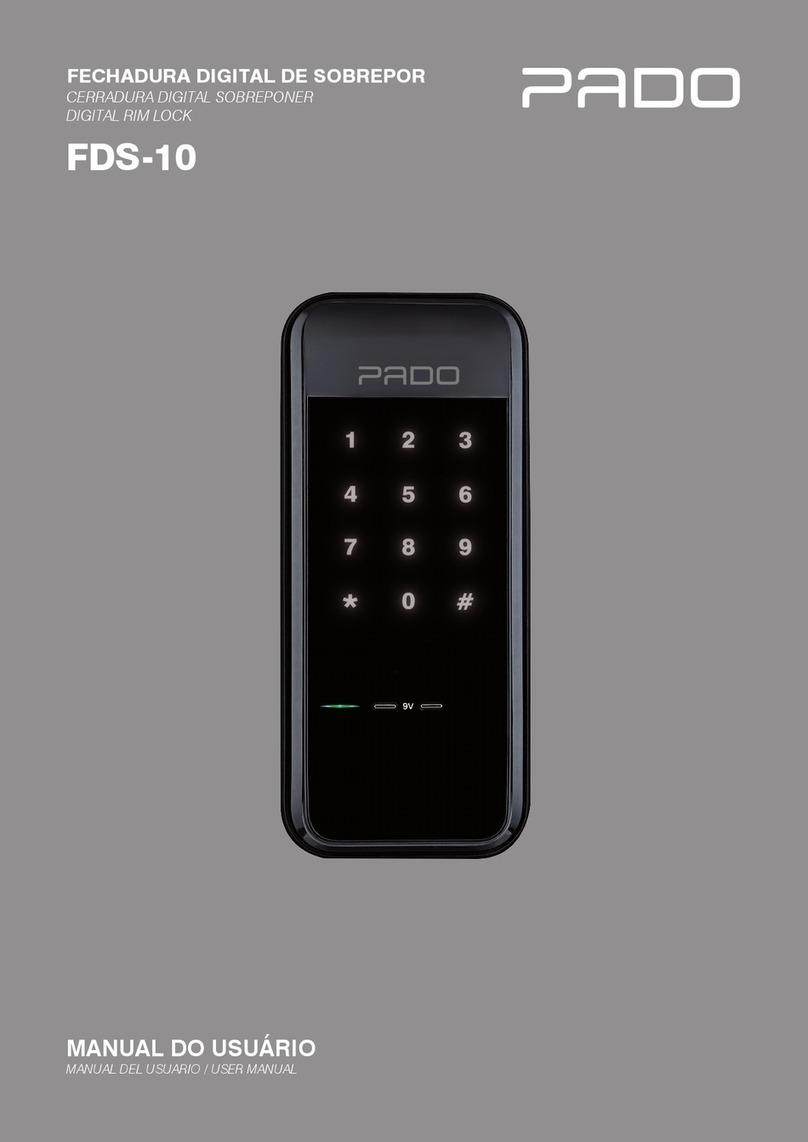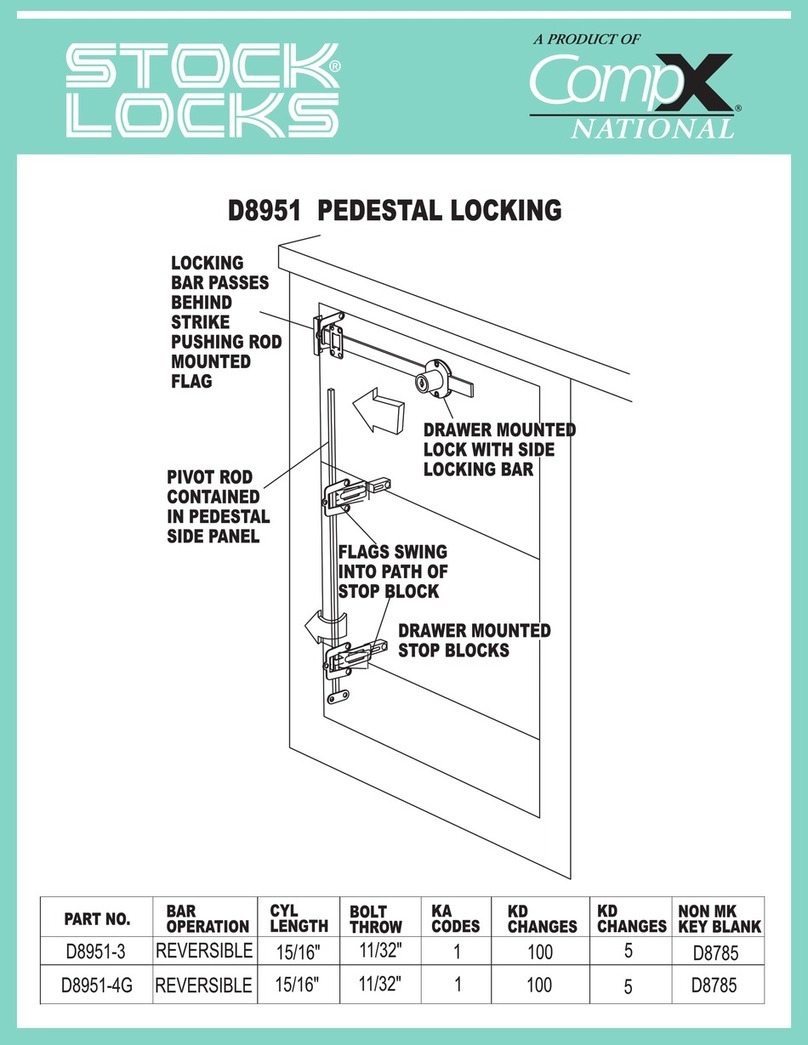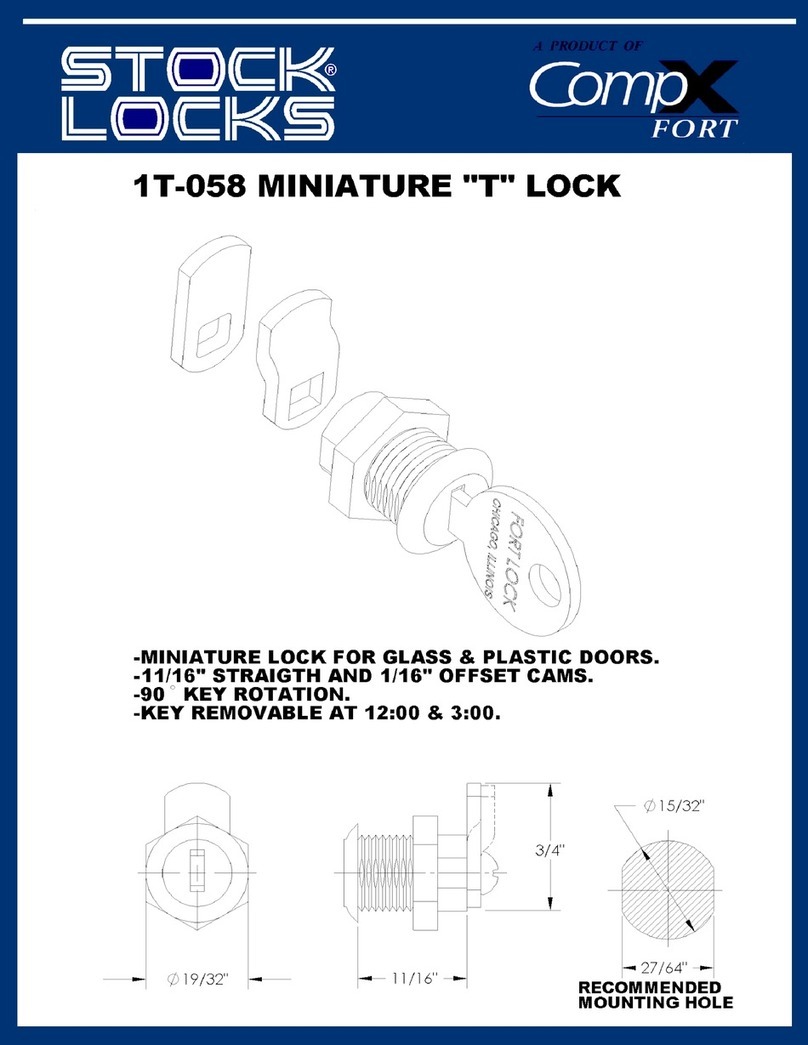THESE INSTRUCTIONS CONTAIN IMPORTANT SAFETY AND MAINTENANCE INFORMATION AND MUST BE PASSED
TO THE END USER.
The safety features of this product are essential to its compliance with EN179. The suppled keeps should be used to ensure
compliance. No modifications, other than those described in these instructions, are permitted.
No other devices that secure the door in the closed position should be fitted to a door set incorporating this device.
Routine maintenance is vital to ensure the continued performance of the locking systems and compliance with relevant
standards. Refer to section 10 for maintenance instructions.
Before fitting this Surelock device, read these instructions carefully and verify the door construction allows for the use of
this device. If in doubt, please contact our technical sales department for advice.
The system these instructions are supplied with is designed to fit inward and outward opening steel or timber fire and non-fire
doorsets with door leaf maximum dimensions of 2500mm (8’ 2½”) height and 1300mm (4’ 3¼”) width, with maximum mass of 200kg
(440lbs) and maximum door distortion of 5mm (3/16”). The door leaf and fixing method should be of sufficient strength that it is not
possible to pull out the fixings by applying 1000N (225lbs) force. For security / blast doors, it is recommended that core fixings are
used on timber doors or fixings are tapped into 8mm steel plate to give equivalent strength to the M8 fixings provided. It is not
recommended that emergency exit devices are fitted to hollow core composite or timber doors. The door must be hung correctly, be
free from binding.
When fitting to a fire door, the fire certification of the door should be examined to ensure the device is suitable for use on that door.
Where double doorsets have a rebated meeting stiles and self-closing devices, a door coordinator complying with EN 1158 should be
fitted to ensure the correct closing sequence of the doors. This device is not intended for use on double swing doors.
If a door closing device is to be used, care should be taken to ensure this does not to impair the use of the doorway by the young,
elderly or infirm.
Category 2 (standard projection) emergency exit devices should be used in situations where there is restricted width for escape, or
where the doorsets are not able to open beyond 90°.
Where an emergency exit device is designed to be fitted to a glazed door, it is essential that the glazing is tempered or laminated
glass.
When fitting emergency exit devices to doors on raised or recessed surfaces, consideration should be given to minimising potential
safety risks, such as trapping fingers or clothing. Care should be taken to ensure that any seals or weather-stripping, do not inhibit the
correct operation of the panic exit device.

